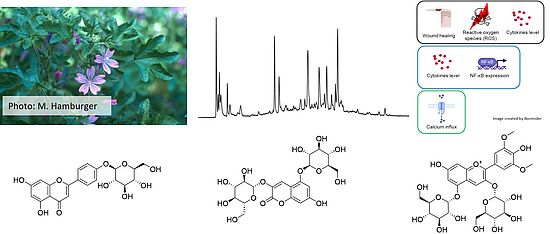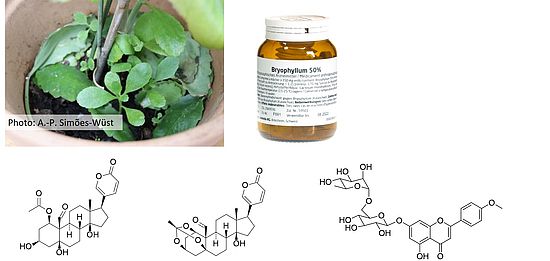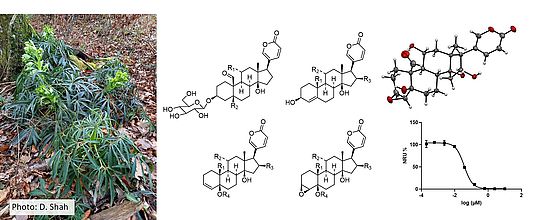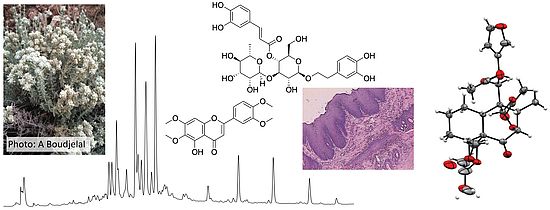Medicinal Plants
According to the World Health Organisation (WHO), medicinal plants are the primary source for medicines for 70% of the world population. The use of medicinal plants and herbal medicines is also popular in industrialized countries. In some European countries including Switzerland, these products are considered as drugs and have to obtain approval by the health authorities.
For numerous medicinal plants, however, the knowledge on their active principles and molecular modes of action is still insufficient. Typically, phytopharmaceuticals are complex extracts and their detailed chemical composition and contributions of individual constituents to the overall pharmacological properties remain unknown, with very few exceptions only.
In collaboration with pharmacologists, we explore the composition and biological properties of medicinal plants as a contribution to rational phytotherapy. Our investigations include officinal medicinal plants, anthroposophic medicines, and plants used in the traditional medicine of North Africa.
Below, a few selected examples are outlined:
- In collaboration with Prof. C. Gründemann from the Translational Complementary Medicine group, we investigated the benefit of various fractions and compounds from Malva sylvestris for the treatment of dried eye disease (DED) based on antioxidant, wound healing and anti-inflammatory effects. The study underscored the potential of M. sylvestris as part of new therapeutic approaches for the treatment of DED pathology.

- Bryophyllum pinnatum, originally used in anthroposophic medicine for hyperactive conditions, is now also applied in conventional settings for the treatment of preterm labor and anxiety. As part of the Bryophyllum Study Group, we are collaborating with Weleda AG and the University Hospital Zürich (Prof. A. P. Simões-Wüst) on a large research project that that integrates analytical, pharmacological, and clinical approaches, aiming to expand the scientific foundation for the use of this plant in obstetrics.

- Hellebore species have been used in anthroposophic medicine for integrative cancer therapy. In collaboration with the Hiscia Institute in Arlesheim and the University of Applied Sciences and Arts Northwestern Switzerland (FHNW), we undertook an in-depth investigation of the bioactive constituents of Helleborus foetidus (stinking hellebore). A series of bufadienolides and norbufadienolides, including previously undescribed compounds, were isolated. Several isolates demonstrated strong cytotoxic properties toward breast cancer cells, thereby complementing the scientific basis for the use of this plant for integrative cancer treatment in anthroposophic medicine.

- Teucrium polium is used in the Algerian traditional medicine for several indications including the treatment of wounds. In collaboration with Prof. A. Boudjelal from the University of M’sila in Algeria, we investigated the composition of an extract showing wound healing properties in rabbits. Beside establishing a comprehensive polyphenolic profile, we discovered new diterpenes with uncommon chemical structures.

